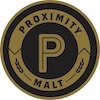
 Master Brewers Podcast
Master Brewers Podcast Episode 201: Wort Separation
17 snips
Mar 3, 2025 Travis Audet, a Zone technical expert in brewing for Anheuser-Busch InBev, dives deep into the art of wort separation. He discusses critical factors like lipid levels, pH, and timing that can make or break the brewing process. Audet shares insights on innovative techniques like the 'accordion effect' to optimize channeling and highlights the importance of monitoring differential pressure for brewing efficiency. His expertise sheds light on mastering temperature control and the impact of modern equipment design on achieving clarity and maximizing yield.
AI Snips
Chapters
Transcript
Episode notes
Wort Separation Objectives
- Prioritize clear worts with relatively low lipid content for quality.
- Limit last wort Play-Doh and keep pH low to minimize polyphenol extraction.
Wort Separation Steps
- Start with a clean vessel and ensure the correct temperature for optimal lautering.
- Use foundation water and recirculate (vorlauf) to achieve wort clarity.
Wort Clarity Debate
- Cloudy worts have higher lipid content, potentially aiding yeast growth but risking oxidation.
- Supplementing zinc directly is more effective than relying on cloudy worts.





